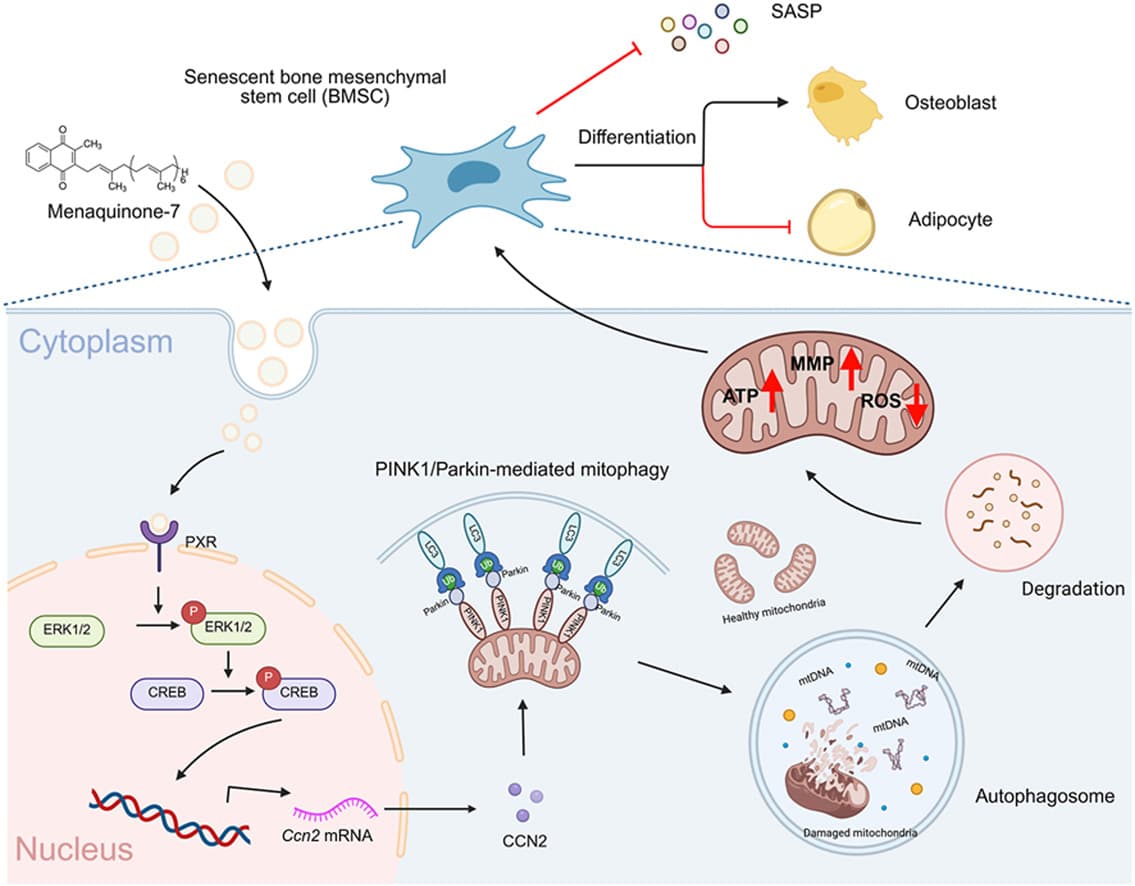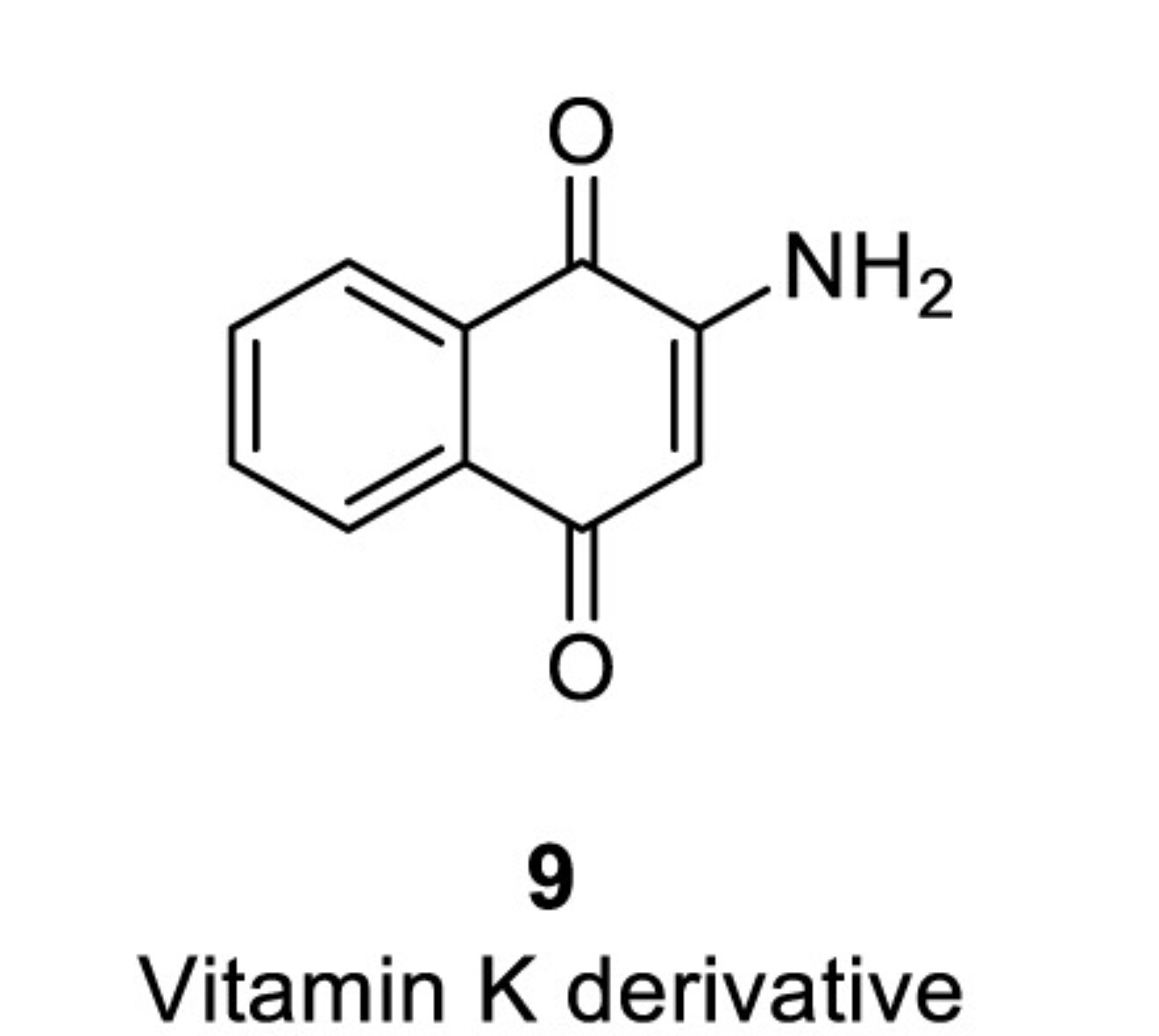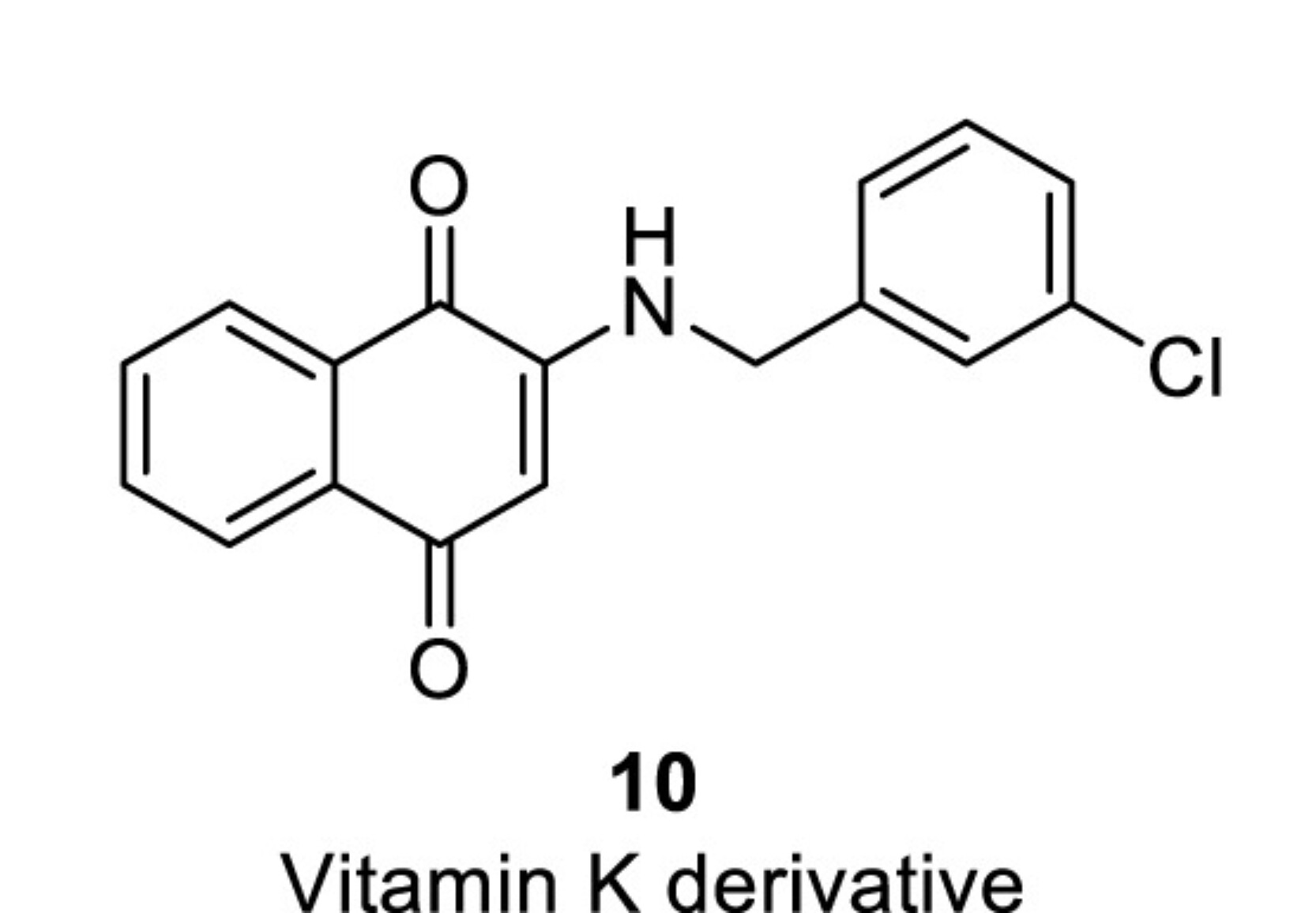I’m taking 10x more MK7 (so 1,000 µg = 1 mg), in oil form.
How did you settle on the dose? I ask, because I see recommendations all over the place, depending on what the aim is, bone health, CV, brain whatnot.
I take one of those Life extension Super K pills. It’s a mix of 2mg K1, 1mg K2 MK-4, 180mcg K2 MK-7 in extra virgin olive oil stabilized with 10mg vit C.
My thought was that if there is some persistence or accumulation of vitamin K on account of being fat soluble, then if you supplement long term, it matters less if you take in 200mcg or 500mcg daily in a long perspective. But maybe that’s wrong.
I feel better with 1 mg ![]() Might be placebo, I don’t know, but the higher the better and whenever I lower it I feel worse.
Might be placebo, I don’t know, but the higher the better and whenever I lower it I feel worse.
I think the key distinction is whether or not there are at least 7 isoprene residues. This enables the molecule to be hydrophobic and sit in the mitochondrial membrane accepting electrons.
AIUI this makes the mitochondria more efficient. Obviously the more MK-7 molecules there are then the more it adds to efficiency.
It has a long half life (75 hours). Hence if you take 200 μg the steady state concentration is equivalent to the peak of a dose of 1mg and 500μg is 2.5mg.
The rat experiments had a NOAEL at about 5% of the diet. However, I am not inclined to go too high not least it starts getting quite expensive.
Would for me be 170g per day.
Hi! How do you take the natto. Do you put it in capsules? I am thinking about that risk that the acidic environment in the stomach degrades it.
this is what AI told me:
"the acidic environment in the stomach can degrade nattokinase to some extent. Nattokinase is a serine protease enzyme, and like many proteins, it is susceptible to denaturation and breakdown in highly acidic conditions, such as those found in the stomach (pH 1.5–3.5). The low pH can disrupt the enzyme’s structure, potentially reducing its activity by the time it reaches the intestines, where it is typically absorbed and exerts its fibrinolytic (clot-dissolving) effects.
However, the degree of degradation depends on factors like the formulation of the nattokinase supplement. For example, enteric-coated capsules or other protective delivery methods can shield nattokinase from stomach acid, allowing it to pass into the small intestine relatively intact. Studies suggest that unprotected nattokinase may lose significant activity in the stomach, but precise data on its stability varies. Research on similar enzymes indicates that while some activity may survive gastric conditions, protective measures improve its bioavailability."
I cam across this podcast with Patrick Theut, note he does sell his own vitamin K, yet he also links to a lot of studies and information on MK7. I learned a lot from this interview.
There’s a fair bit of Vitamin K information here, also what are people thoughts on this product?
I asked some questions of chatGPT about MK7 and mTOR and Serum Glucose, I am not of the view that the answers are that much good, but if someone wants to read up on mk7 the answer is worth reading.
VK2 was administered to HFD-fed C57BL/6 mice for 16 weeks.
For the randomized controlled trial (RCT), a total of 102 T2DM patients aged 50–80 years were recruited and randomly assigned to receive yogurt (one cup per day) with or without VK2 fortification (90 μg/day) for 6 months.
VK2 significantly improved grip strength (p < 0.01) and exercise capacity (all p < 0.05) in HFD-fed mice. At the tissue level, VK2 increased skeletal muscle mass (p < 0.05) and cross-sectional area of muscle fibres (p < 0.05), while reducing the proportion of fast-twitch fibres (p < 0.01). VK2 treatment decreased body fat rate (p < 0.01) accompanied by enhanced whole-body energy metabolism. VK2 also diminished the glucolipid metabolism parameters, including glucose (p < 0.01), HOMA-IR (p < 0.01) and serum lipid levels. Regarding the mechanism, VK2 promoted the phosphorylation of proteins in the FAK-AKT–mTOR-P70S6K pathway by targeting Ccn2, thereby enhancing protein synthesis of C2C12 myotubes. In the RCT study, VK2 supplementation significantly increased grip strength (ptreatment × time = 0.017), SM (ptreatment × time = 0.001), SMI (ptreatment × time < 0.001) and decreased HbA1c (ptreatment × time < 0.001), FBG (ptreatment × time = 0.056), FINS (ptreatment × time < 0.001), and HOMA-IR (ptreatment × time < 0.001) in T2DM subjects.
In mice, but interesting:
Vitamin K2 (VK2) shows promise as a nutritional intervention for obesity-related disorders, but its mechanisms of action in obesity and associated phenotypes are not yet fully understood. This study aims to elucidate the rescue effects of VK2 on multiple tissues during obesity. Twenty-eight 8-week-old male C57BL6/N mice are divided into four groups and fed a high-fat diet or normal diet for 16 weeks, receiving either menaquinone-7 (MK-7) or soybean oil solvent via gavage. RNA sequencing of brain, colon, muscle, heart, kidney, and liver tissues constructed a multi-organ transcriptional profile. The “rescue differentially expressed genes (DEGs)” are identified and tissue–tissue communication is analyzed. VK2 improves the biochemical profile in high-fat diet-induced obesity. Following VK2 intervention, the brain and kidneys exhibit more changes in autophagy, neurodegenerative diseases, energy metabolism, and immune response pathways. VK2 rescues over 10% of abnormally expressed genes, with most being fully restored. These rescue genes exhibit tissue-specific biological effects, including neuropeptide signaling and neuron ensheathment in the brain; triglyceride metabolism and carboxylic acid catabolism in the colon; microvillus organization and vascular permeability regulation in the heart; regulation of immune processes and collagen biosynthesis in the kidney; transforming growth factor-beta receptor signaling, iron transport and homeostasis in the liver; and muscle contraction, ATP transport, and filament sliding in the muscle. VK2 eliminates elevated ligand–receptor signals in immune response pathways and promotes the tissue–tissue signaling network to approach healthy control levels. VK2 significantly rescues the multi-organ transcriptome and restores tissue-specific pathways in high-fat diet-induced obese mice, providing the molecular mechanisms countering metabolic disorders.
Without reading the paper I cannot say, but this could be related to splicing changes. It is quite likely to be linked in some way to acetylation.
MK-7 targets PXR to activate ERK/CREB-Ccn2 axis, restoring mitophagy in senile osteoporosis.
MK-7 binds PXR at F285 residue, validated by DARTS, CETSA, and molecular docking.
Dual action: MK-7 mitigates senescence and metabolic dysfunction in aged BMSCs.
Ccn2-driven mitophagy reduces mtDNA damage and SASP, reversing bone loss.
MK-7 offers a safe strategy for geriatric bone health via mitochondrial quality control.
Current therapeutic strategies for senile osteoporosis inadequately address its low-turnover pathology driven by mitochondrial dysfunction and cellular senescence. This study identifies menaquinone-7 (MK-7), a vitamin K2 isoform, as a novel therapeutic agent targeting mitochondrial homeostasis in senile osteoporosis. Through RNA sequencing analysis and intramedullary adeno-associated virus (AAV)-based gene manipulation in aged mice, cellular communication network factor 2 (Ccn2) was identified as a critical mediator of MK-7’s bone-protective effects. Biochemical and proteomic assays revealed that MK-7 binds to the nuclear receptor pregnane X receptor (PXR), activating the extracellular signal-regulated kinases 1/2 (ERK1/2)/cyclic AMP-responsive element-binding protein (CREB) signaling cascade to upregulate Ccn2 in senescent bone marrow mesenchymal stem cells (BMSCs). This pathway enhanced PTEN-induced kinase 1 (PINK1)/Parkin-mediated mitophagy, reducing mitochondrial DNA damage, reactive oxygen species (mtROS), and senescence-associated secretory phenotype (SASP), while restoring metabolic function. MK-7 redirected BMSC differentiation from adipogenic to osteogenic lineages, effectively mitigating age-related bone loss in vivo. Mechanistically, MK-7 stabilized PXR via direct interaction at the F285 residue, as confirmed by drug affinity responsive target stability (DARTS), cellular thermal shift assay (CETSA), and molecular docking. PXR activation further promoted ERK1/2/CREB-dependent Ccn2 expression, which orchestrated mitochondrial quality control and cellular energy metabolism. Our findings establish MK-7 as a dual-function agent that concurrently alleviates senescence and metabolic imbalance in bone tissue, offering a safe and targeted strategy for senile osteoporosis. This study provides critical insights into the pharmacological modulation of mitochondrial pathways and highlights MK-7’s translational potential in geriatric bone health.
@John_Hemming: PINK1)/Parkin-mediated mitophagy + reducing mitochondrial DNA damage = very good news!
Without reading the paper I start with the assumptions
a) The only selective mitophagy is PINK1/Parkin
b) That itself requires a good level of gene expression, a cell with malfunctioning mitochondria may not be able to initiate it.
c) MK7 can prop up damaged mitochondria a certain amount so that the cells can fix themselves.
It may do other things as well. But that’s a good start.
Interesting, but a long way to actionable human dosage. Japanese studies of osteoporotic women and epi natto consumption surveys are all over the place.
At times studies of K2 use other than 7 isoprene residues. The most frequent alternative is 4. (ie MK4)
I agree, based on studies alone, the evidence is weak. Based on my own lived experience, though, unless proven otherwise, I’ll keep using K2 MK-7 forever ![]()
French-Chinese-German-Italian paper: Vitamin K-Trolox Synergism Realized in Hybrid Neuroprotectant with Potent Anti-Ferroptosi/Oxytosis Activity, Reduced Toxicity, and In Vivo Efficacy in Alzheimer’s Disease Mouse Model 2025
Of course, it’s a mouse model, but the methodology is interesting:
The Chou group systematically explored the structure-activity relationships (SAR) of vitamin K derivatives, identifying menaquinone-based analogs 9 and 10 with enhanced neuroprotective profiles against oxytosis (Figure 1).
Of note, vitamin K analogs confer ferroptosis resistance through a non-canonical pathway involving ferroptosis suppressor protein 1 (FSP1), operating independently of the glutathione peroxidase-4 (GPX4) axis.[17]
They used those derivatives:
According to ChatGPT: " Menaquinones are 2-methyl-3-polyisoprenyl-1,4-naphthoquinones (MK-4, MK-7, etc.). The 9 and 10 compounds have an amino at C-2 and no polyisoprenyl chain at C-3, so they’re best classified as amino-naphthoquinones / menadione (vitamin K3) analogs, not MK-type vitamers."
Good posters on CKD and Vit K2: Poster Issues for: 74th Annual Scientific Meeting of the BSRA (2025): The Biology of Ageing - BSRA - #24 by John_Hemming
Related:
Is this available publicly yet?


